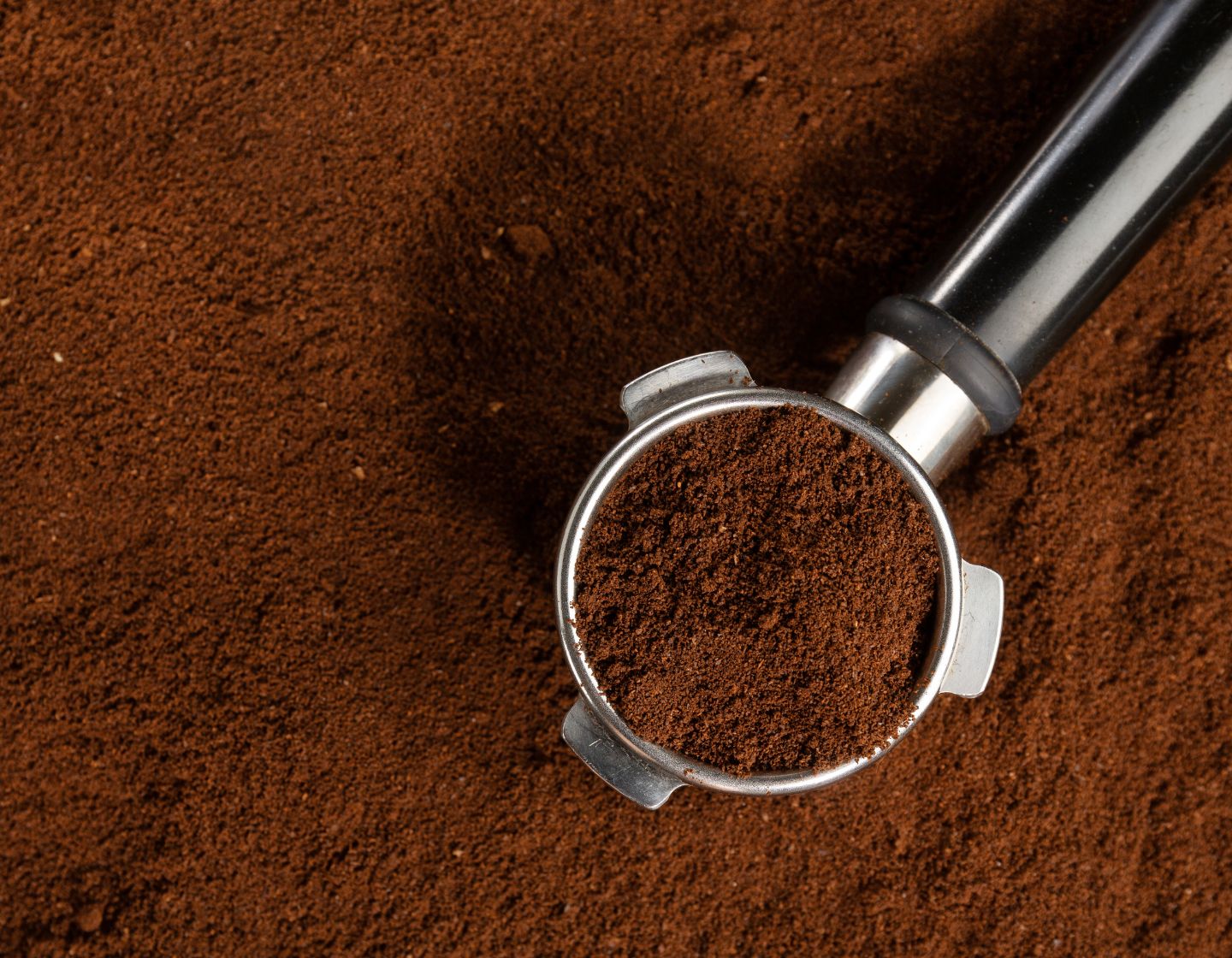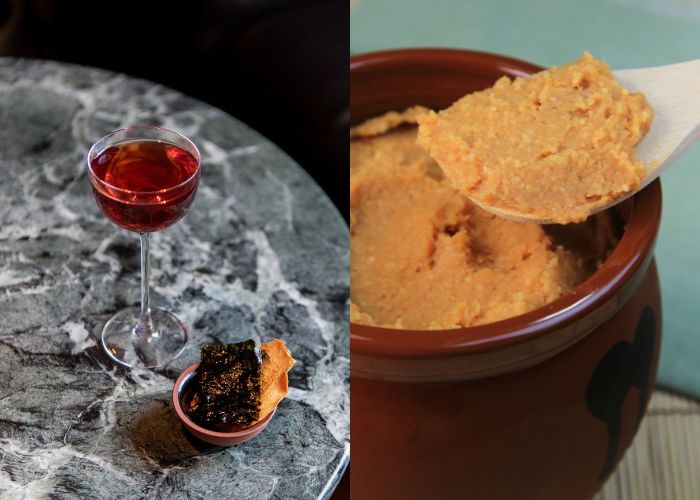
Three Cocktail Ingredients of the Future
Ready to be inspired? Get creative as Kate Chernoff, a two-time World Class Canada finalist, tells us what cocktail ingredients will be trending in the future and how you can use them in your innovative cocktail serves.
Author: Kate Chernoff
Estimated reading time: 5 minutes
FUTURE COCKTAIL INGREDIENT - UBE

FUTURE COCKTAIL INGREDIENT - UBE
What is ube? Ube extract is a naturally pigmented purple yam from the Philippines with notes of coconut, hazelnut and vanilla.
In baking, it’s common to mash the yam into a dessert but I prefer to use ube extract in cocktails as opposed to the fresh yam, because it’s easier to source, more consistent and more cost-efficient.
WHY USE UBE IN COCKTAILS?
Ube extract adds eye-catching purple color and intense complex flavors to a cocktail. A little goes a very long way, both in terms of flavour and its gorgeous color, and it’s great at balancing any bitter or sour ingredients in your cocktail.
The nutty, floral flavors can add depth of flavor to both classic and custom cocktails. As the drinks and food worlds continue to collide, bartenders are increasingly looking to chefs for technique and ingredient inspiration. Due to ube’s current popularity in North America, and longstanding presence in the international culinary world, I believe it will become a more established cocktail ingredient of the near future.
HOW TO USE UBE IN COCKTAILS
Using extracts and essential oils in cocktails adds a huge amount of flavour, sometimes from just a single drop. You can add ube extract to cocktails by:
Creating a syrup: 1tsp in 16oz. of a 1:1 sugar syrup is a great rule of thumb, but feel free to customize your ratio!
Infusing ice cubes: the slow melt of the highly pigmented extract will create an interactive visual experience for the imbiber.
Making a ube tincture (concentrated alcoholic infusions that you can use to enhance the flavors of a cocktail by adding a drop or two): add ube extract and your choice of botanical to a high-proof neutral grain spirit to create a custom flavoring agent to your drinks.
Want to give it a try? Have a go at making this Frozen Ube Highball:
GLITTERING FROZEN UBE HIGHBALL
In my Glittering Frozen Ube Highball, I chose to infuse the ice cubes, rather than create a syrup or another flavoring agent, because I’ve found that the melting of flavor into the drink over time creates a more engaging guest experience.
I also added some edible glitter to the ice cubes to give the cocktail a majestic sparkle. Glitter cocktails are big in the bar scene at the moment and they’re super easy to make just by adding a sprinkle into your ice cube mixture. This unique spread of color, sparkle and flavor is as captivating as it is delicious. Plus, it only requires a few minutes of prep and a few hours of freezing!
Ube’s confectionery flavors perfectly complement the tropical and vanilla notes on the nose of Johnnie Walker Black Label. Ube has aromas of vanilla, coconut, hazelnut and taro root, which provide depth of flavor and a silky smooth mouthfeel to this effervescent highball. The oak cask influence blended with the signature smoke of Johnnie Walker Black Label is an excellent contrast point for the sweet and rich flavors of the ube extract. The result is a bright, fresh, tropical, subtle, classic Johnnie Walker highball, with a futuristic twist.
FUTURE COCKTAIL INGREDIENT - MISO

FUTURE COCKTAIL INGREDIENT - MISO
What is miso? Traditionally used in Japanese cuisine, miso is an umami-rich seasoning frequently seen in the ingredients lists of soups, marinades, stir fries, and salad dressings.
It’s a soybean paste, fermented with salt and koji (a spore which is also used to ferment soy sauce, sake, and rice vinegar), and is often categorized by its color (white, yellow, red and brown). However, there is so much more to miso than its color – in fact, there are over 1300 varieties.
WHY USE MISO IN COCKTAILS?
Miso lends uniquely savory and salty flavors to cocktails. I love adding salinity to Johnnie Walker Red Label cocktails in particular, to enhance the seaside influences on the scotch. I believe that miso will become more widely used in the bar scene as the use of salting agents behind the bar is becoming more common. Salt seasons your cocktails the same way it seasons your dinner and is a fantastic addition to almost every drink.
The umami trend is all about using salinity as a tool to enhance the flavors of the base spirit in cocktails. The pronounced notes of dried fruits, fresh zest, vanilla and signature smoke perfectly blended can be transformed into a great cocktail with the addition of Miso. Miso adds salt to the whisky which already is rich in black pepper and spicy cinnamon, adding salinity to the spiced palette. The umami flavors in the Japanese paste play with the fresh fruitiness of the blended scotch.
HOW TO USE MISO IN COCKTAILS
Like ube, a little miso goes a long way due to its rich flavor. You can add miso to cocktails by:
Infusing it into neutral grain spirits to create tinctures.
Macerating it (steeping it) in cordials to add a unique depth of flavor.
Infusing it in a modifying spirit.
Ready to start experimenting with miso? Try creating this Miso Boulevardier cocktail:
MISO BOULEVARDIER
The rice-based Shiro (white) miso lends salinity to this cocktail which enhances the zest, spice, and smoke in Johnnie Walker Red Label. Infused in a red bitter Italian liqueur, and paired with a dried mango-infused sweet vermouth and Johnnie Walker, this cocktail offers a balanced, sweet and salty experience.
FUTURE COCKTAIL INGREDIENT – NATURAL COFFEE

FUTURE COCKTAIL INGREDIENT – NATURAL COFFEE
What is natural coffee? Natural coffee (also known as dry process coffee) isn’t like your average morning cup of coffee. In modern coffee production, water is used to remove the fruit from the coffee bean, whereas, in natural coffee production, the fruit-covered beans are left to ferment in the sun. This process releases luscious, fruity, funky, and dessert-like flavors into the beans.
WHY USE NATURAL COFFEE IN COCKTAILS?
Natural coffee is a great ingredient because it’s created using far less water than our typical coffee beans. Any way we can limit water use in the food and beverage industry is a win as it helps us create more sustainable cocktails. Not only that, but natural coffee provides unique, fruity, confectionery flavors unlike regular coffee beans, which adds dimension and complexity to cocktails.
I believe natural coffee will become trendier in the cocktail scene due to its wine-like round, robust and fruity flavors, in addition to it typically being less acidic. Some bartenders use acid powders (acidic solution after being dissolved in a solvent) to manipulate the levels of acidity in their cocktails, so working with a product which provides more flavor and less acid can lead to more mosaic coffee cocktails.
HOW TO USE NATURAL COFFEE IN COCKTAILS
Natural coffee is an amazing addition to a variety of cocktails. A few ways you can use it include:
Brewing natural ground coffee according to the instructions on the package and simply adding it to your cocktail to lend fruitiness, acidity and complexity.
Repurposing the grounds into infusions or syrups.
Batching your cocktail and straining the batch through the grounds.
Want to give it a go? Here’s how to make a delicious Natural Coffee Cocktail:
NATURAL COFFEE COCKTAIL
The aromatic, rich smells of freshly cut grass on the nose of Johnnie Walker Green Label led me to look into the esters producing those aromas, which is where I discovered Guaiacol; an organic phenolic compound, which is also found in lemon peels, watermelon, sesame, and coffee. The water-less production of natural coffee also inspired me to make an ice-less cocktail, using watermelon and natural coffee as lengtheners, two ingredients with high water contents.
TIP: When making an ice-less cocktail, always ensure your ingredients and glassware are as cold as possible. Try storing Johnnie Walker Green Label in the freezer for this effect.
KEY TAKEAWAYS
A little ube goes a very long way, both in terms of flavor and its gorgeous purple color, and it’s great at balancing any bitter or sour ingredients in your cocktail.
As the drinks and food worlds continue to collide, bartenders are increasingly looking to chefs for technique and ingredient inspiration.
Miso lends uniquely savory and salty flavors to cocktails. Kate believes that miso will become more widely used in the bar scene as the use of salting agents behind the bar becomes more commonplace.
The umami trend is all about using salinity as a tool to enhance the flavors of the base spirit in cocktails.
Natural coffee uses significantly less water in its production, making it a more sustainable ingredient and provides unique, fruity, confectionery flavors unlike regular coffee beans, which adds dimension and complexity to cocktails.


